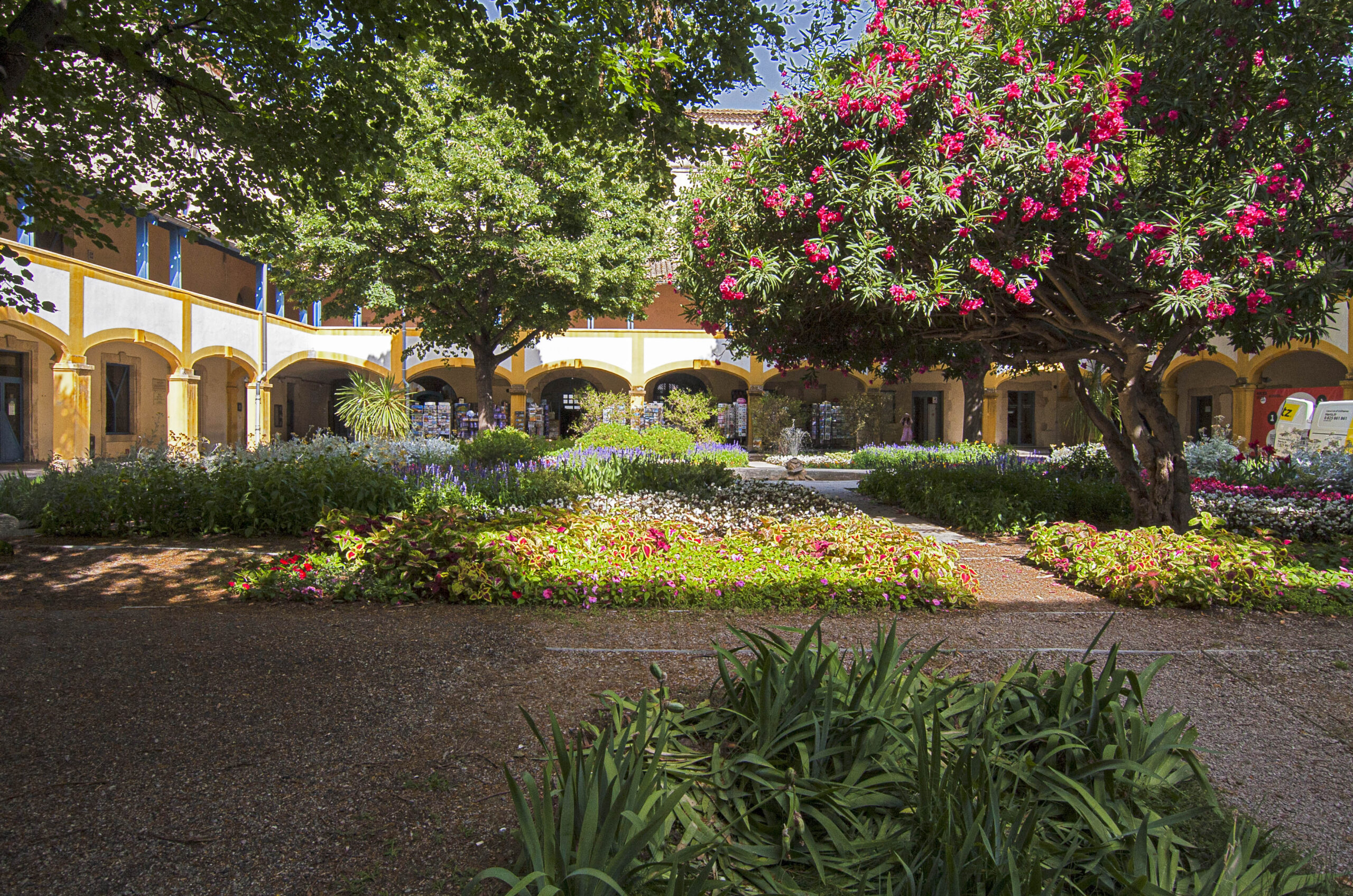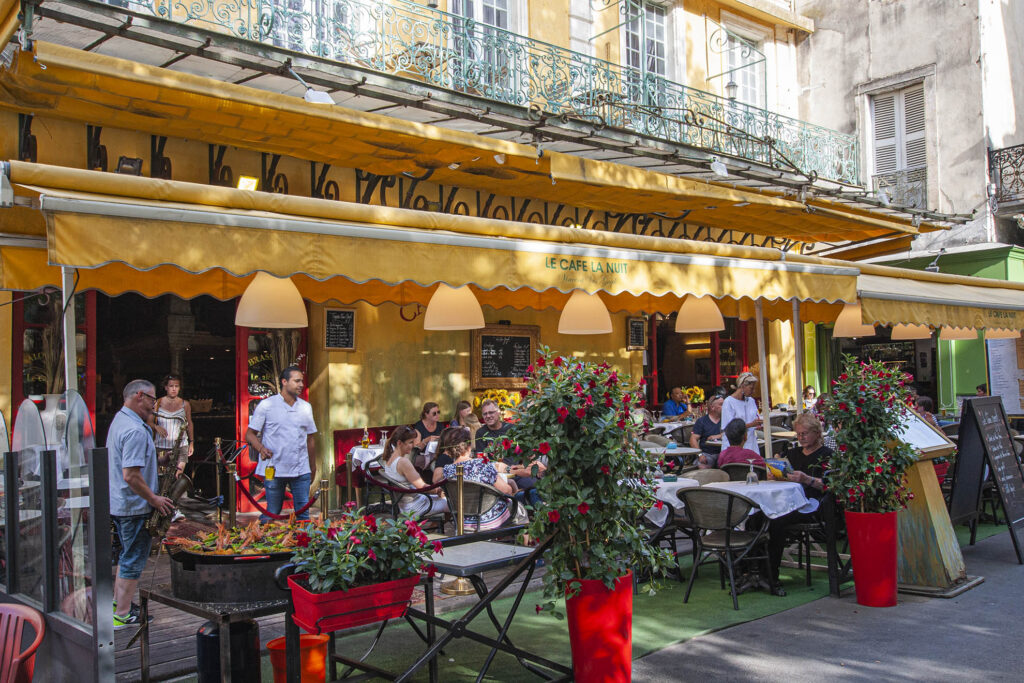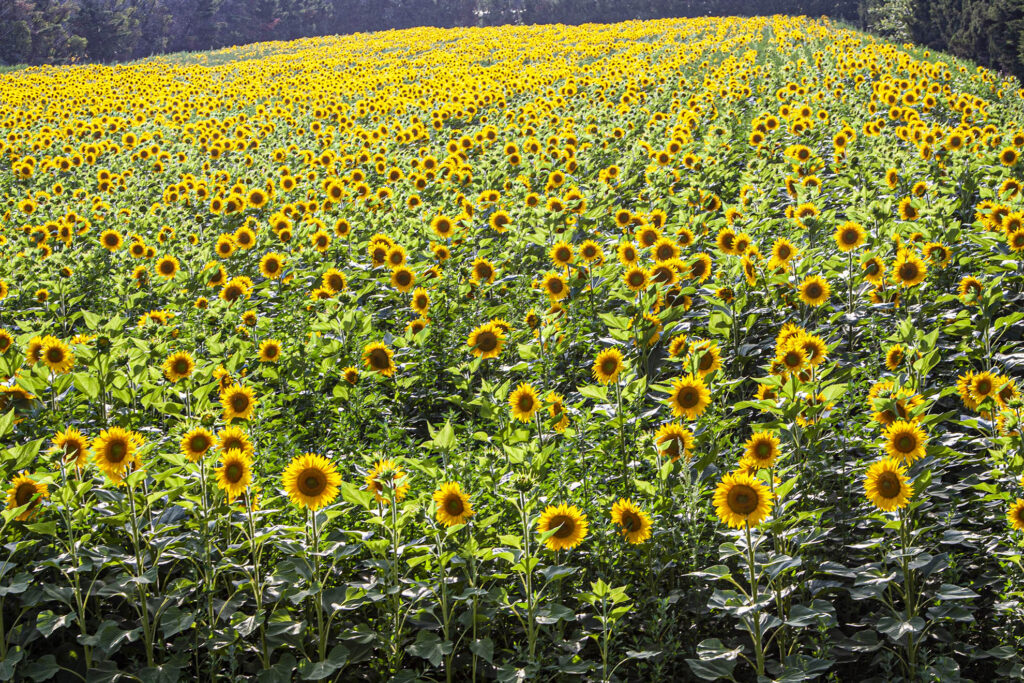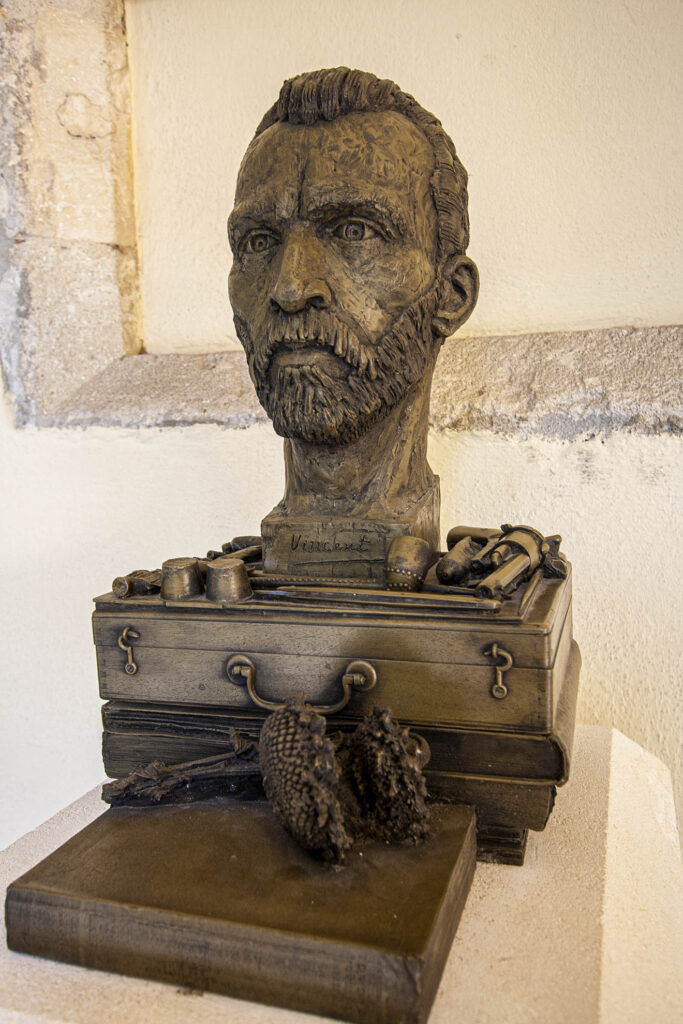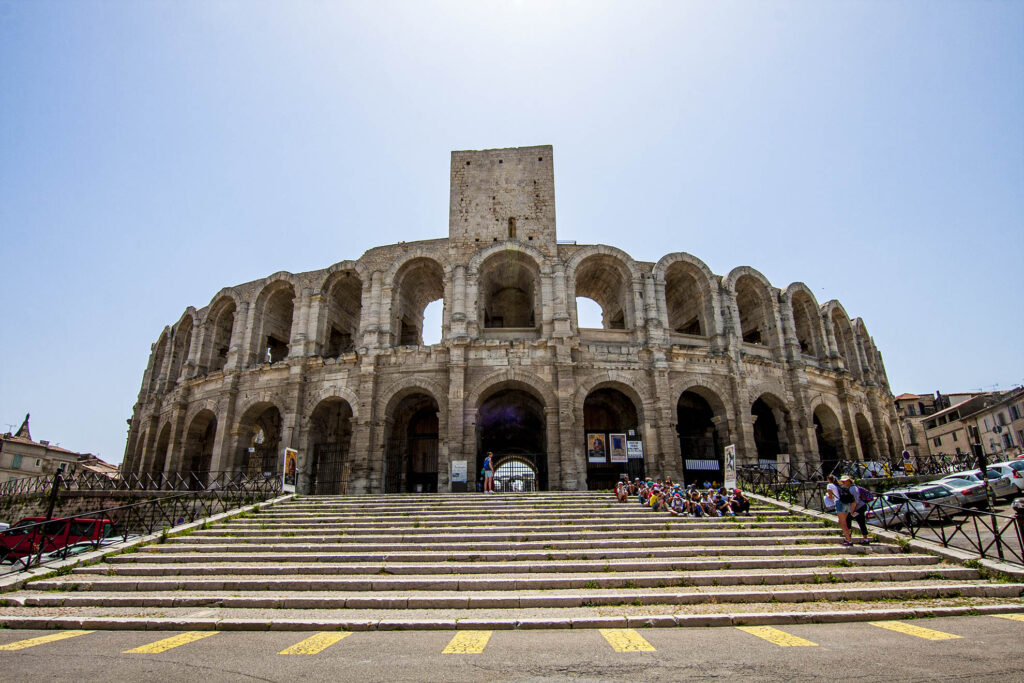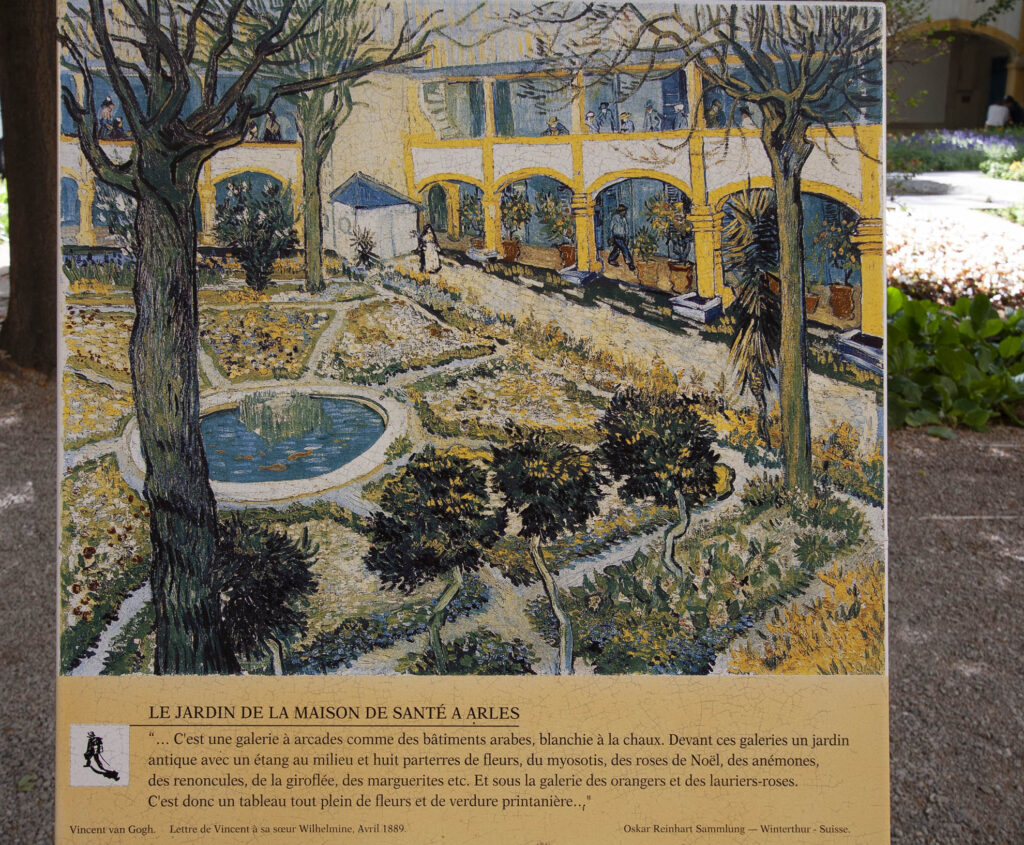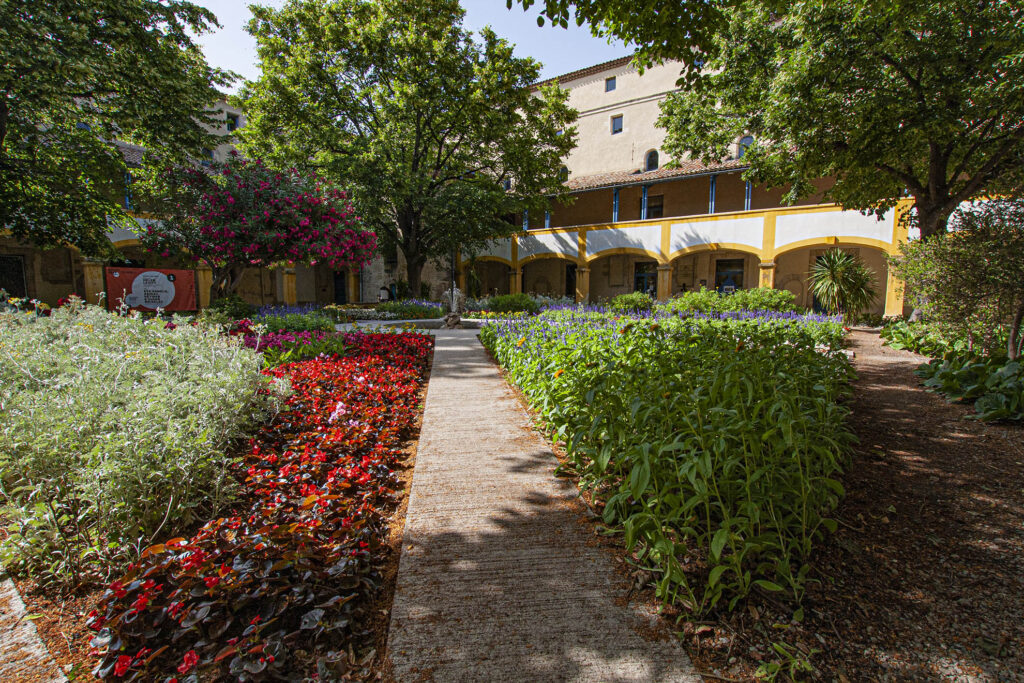To see the late sun backlighting a field of sunflower blossoms is to understand the colors of Vincent Van Gogh’s best-known paintings. The intense light that bathes the landscapes of Provence entranced him and changed his palette from the soft and muted tones of northern Europe’s light to the vibrant and sharply contrasting colors of his later paintings.
A visit to Arles, where he lived from February 1888 until May 1889, reveals not only the scenes he painted, but the intense colors in which he portrayed them. His enchantment and delight in the sun-bathed city and landscapes inspired him into an intensely productive period; he completed about 300 works in this 15 months.
The city has made it easy to find these scenes, many of which have changed very little from Van Gogh’s time in Arles. At each of the viewpoints for his Arles paintings, the city had posted a panel showing a photo of the work with information on its historical and artistic background, such as explaining his experiments with the use of color and light.
Visitors can stand where Van Gogh set up his easel and see the scenes much as he did. Ten of these sites in Arles are marked on the Van Gogh Walking Tour map, available from the Arles Tourist Office or downloaded as a PDF.
Perhaps the most familiar of all Van Gogh’s Arles works is the Place du Forum, setting for Le Café le soir (Café in the evening). If the café — sadly, now an over-priced tourist trap — looks exactly like the painting, it’s because in 1989, on the 100th anniversary of his year in Arles, the café was restored to its original appearance. At that time, it was painted yellow to correspond with the painting, but when he painted it, Van Gogh used yellow to reproduce the light cast by streetlamps.
It was during his time in Arles that the artist began creating his night scenes. He told his brother in a letter that his goal was to capture night views without using the color black. This is also where he began painting the night skies. Although less familiar than his iconic Starry Night, which was painted later, Starry Night over the Rhone was painted from the embankment not far from the site of his Yellow House. The original house was destroyed in 1944, but the vantage point for the painting is marked in Place Lamartine.
Farther along the river is the embankment where he painted the Staircase of the Trinquetaille Bridge, and a short way out of the city, alongside the Arles-to-Bouc Canal is the Langlois Bridge, better known now as the Van Gogh Bridge, scene of his Langlois Bridge with Washerwomen.
Increasing mental illness plagued Van Gogh during his time in Arles, and he was for a time a patient at the 17th century Hôtel-Dieu. From its gallery, he painted the garden in the courtyard below. Also marking the 100 years since the artist painted in Arles, the courtyard garden was restored to reflect its appearance when he painted it. The building is now a cultural center, Espace Van Gogh, where you can climb to see the view as he painted it; a photo of his painting stands where his easel once stood. The Alyscamps cemetery, where he painted with his fellow artist, Gaugin, was the subject of several of his works; the one shown is of a tree-shaded walk that looks much the same today.
The self-guided walking tour takes visitors past and into some of the city’s Roman sites, well-preserved monuments that merit Arles its UNESCO World Heritage designation. The most prominent of these is a imposing Roman arena in the center of the old city, once the scene of bullfights that Van Gogh often attended. But his painting, Spectators in the Arena, focuses on the crowd, not the bullfight.
The Arles Vincent Van Gogh Foundation was founded for a dual purpose: to pay homage to his work, but also to explore its impact upon art today and encourage a relationship with contemporary art.
The interior of the 15th-century Hôtel Léautaud de Donines has been transformed by the foundation into exhibition spaces that flow in a circuit through its various levels. These are used to showcase the works of contemporary artists with a view to the relationships between Van Gogh’s innovations and their own. At least one original Van Gogh work is on display at any time, on loan from the Van Gogh Museum in Amsterdam.
Most of the foundation’s outreach features are designed for local residents, including school visits and classroom workshops. But programs are open to visitors as well. Local artists offer adult painting workshops exploring Van Gogh’s use of color and his brushstrokes. A four-day class in intaglio etching considers his black-and-white draftsmanship; some of these are in French, others are offered in English.
For the visitor to Arles, it is not just the thrill of seeing the sites he painted, but the way the city seems to rejoice in the tremendous ouvre of paintings during his time there. There is a sense of Van Gogh’s presence there today.
By Barbara Radcliffe Rogers
Europe Correspondent, Planetware
Luxury Travel Editor, BellaOnline
Features, Global Traveler Magazine
https://worldbite.wordpress.com
Photos © Stillman Rogers

